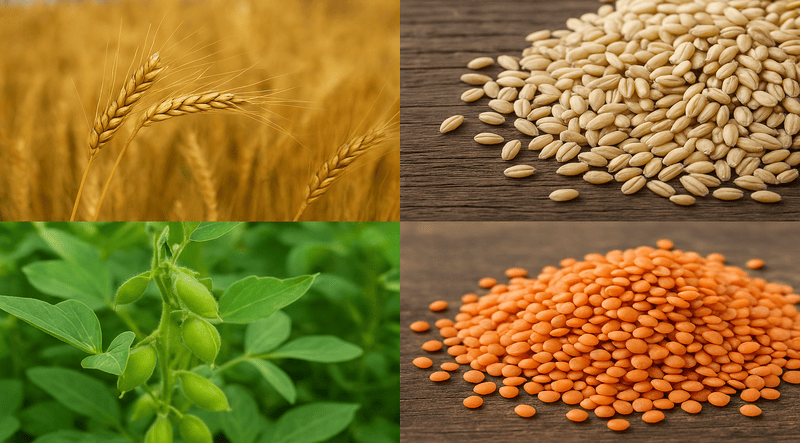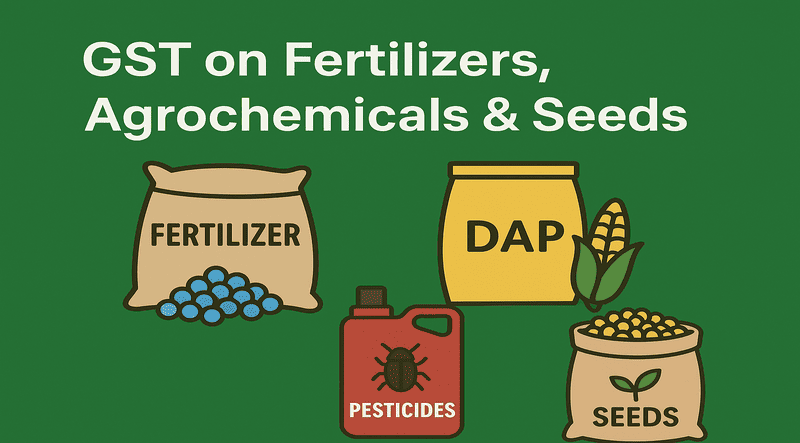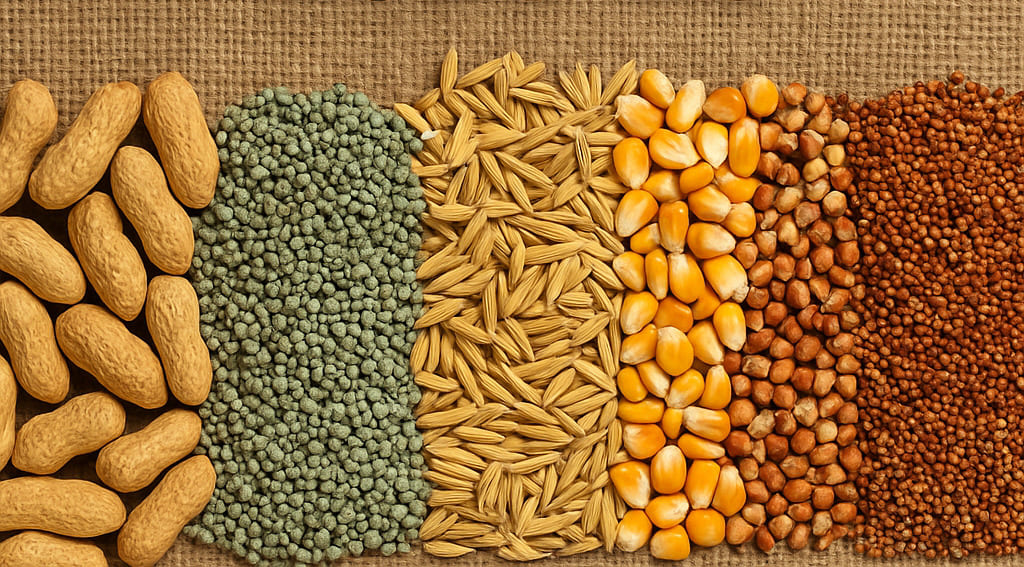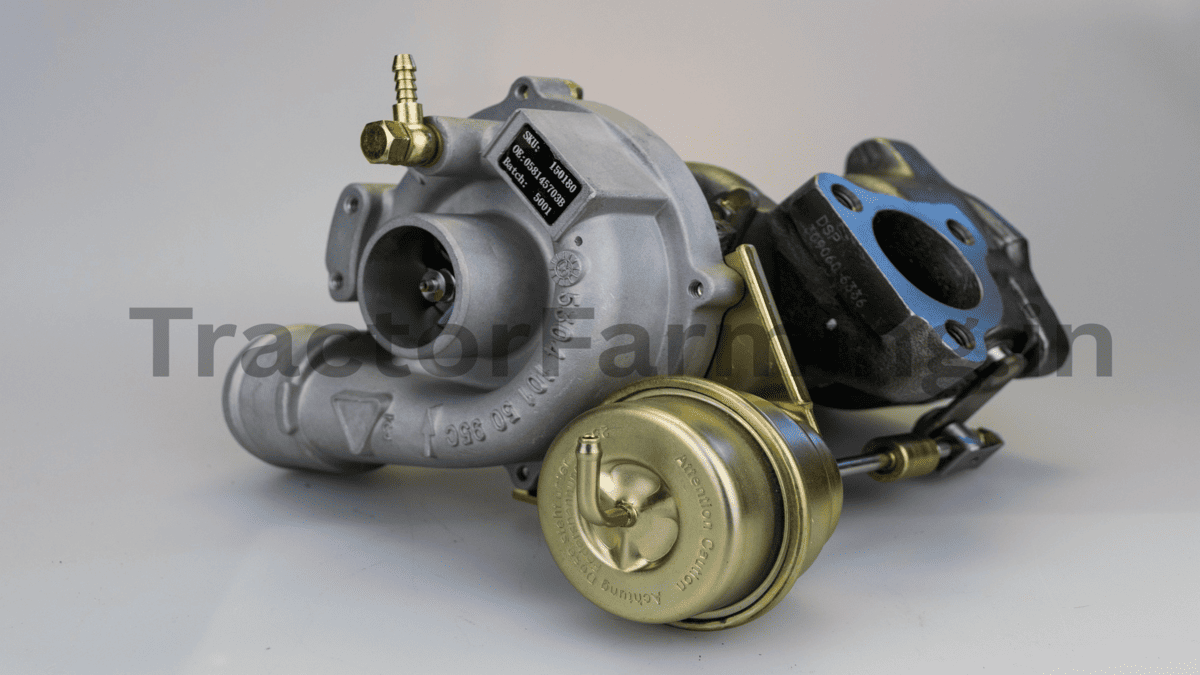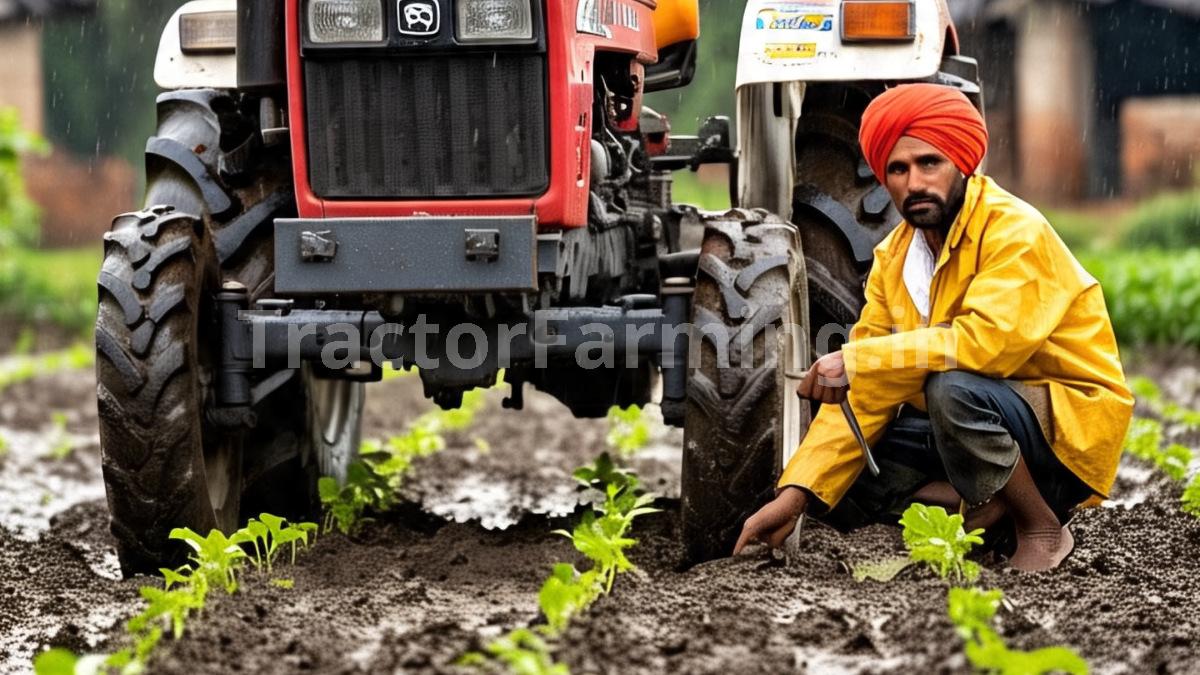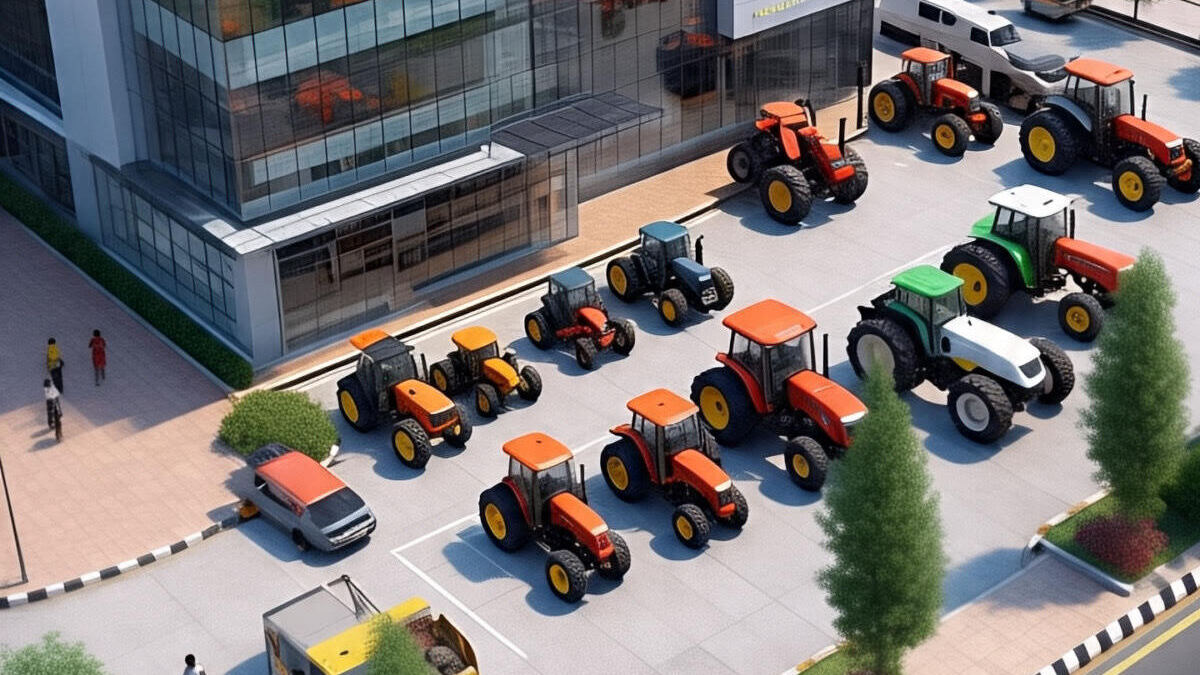Tractor Tyre Maintenance Tips: How to Care & Extend Tyre Life – Complete Guide for Farmers
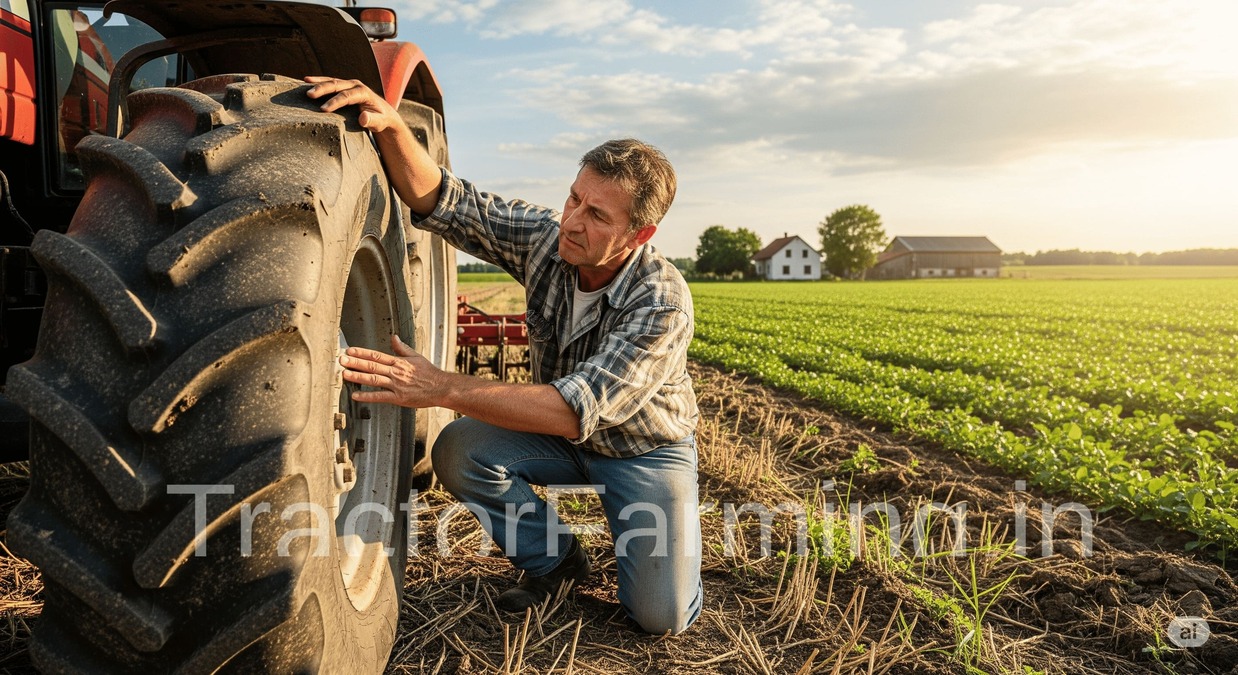
Tractor tyre maintenance is crucial for safety and cost savings. As Michelin notes, “Tractor tyre maintenance is important for a number of reasons. Not only does it ensure the safety of users, it also saves unnecessary expense”. Well-maintained tyres last longer and avoid downtime in the field. For example, a simple monthly pressure check or alignment adjustment can prevent uneven wear and premature replacement. Farmers should inspect tyres before and after each use to look for cuts, bulges, embedded objects or tread wear.
Daily Tyre Care Tips
- Check tyre pressure: Every day (or before heavy work), use a gauge to verify inflation. Under-inflation causes overheating and early wear, while over-inflation reduces traction. Keep tyres at the manufacturer-recommended pressure for your load and task. (A good rule of thumb is around 8–15 psi for fieldwork
- Inspect for damage: Look for cuts, punctures, bulges or cracks on sidewalls and tread. Remove any stones or debris lodged in the lugs. If you find a severe cut or bulge, stop and have the tyre checked – damage like this often means the inner casing is compromised.
- Clean tyres after work: Remove mud, plant sap or chemical residues from the tread and sidewalls. Abrasive chemicals (fertilizers, pesticides, plant juices) can dry and crack rubber. A quick hose-down after a day’s work helps protect the tyre compound.
Weekly and Monthly Checks
- Re-check inflation: Tyres naturally lose a bit of air over time. Check and adjust pressures at least weekly, and whenever you change implements (which changes axle load). Use the highest safe pressure if in doubt, so that the tyres never run underinflated on-road.
- Look for uneven wear: Irregular tread wear (one-sided lugs, “slope” wear, feathered edges) often signals an alignment or balance issue. If wear is uneven, have the alignment checked and consider rotating tyres side-to-side or front-to-rear to even out the tread.
- Rotate and balance: Swap front and rear tyres (as possible) to equalize wear. Ensure wheel nuts are tight and wheels are balanced – unbalanced wheels cause vibration and patchy wear.
- Lubricate wheels and valves: Clean and grease wheel rims and valve stems periodically to prevent rust and air leaks.
Seasonal Care
- Pre-Season Prep: Before heavy seasons (e.g. planting or harvest), inspect and repair tyres. Adjust pressures for wet or dry conditions: e.g. slightly lower for muddy fields, higher for dry ground to avoid sinking. Remove any sharp objects buried during idle seasons.
- Monsoon Considerations: In Indian monsoons, tyres face extra mud and humidity. Clean tyres more often and watch for sidewall damage from debris. Keep pressures on the higher end of the field range (for example, nearer 15 psi) to prevent slipping.
- Post-Season Maintenance: At the end of busy season, wash off all mud and chemicals. Do a thorough inspection. Plan any necessary repairs (patches or professional servicing) before storing.
Common Causes of Tyre Damage & Prevention
- Under- or Over-Inflation: Driving with too little air overheats the tyre and stresses the sidewalls, leading to cracks or blowouts. Over-inflated tyres wear the center tread quickly and give a rough ride. Always use correct pressures – misuse accelerates wear.
- Overloading: Exceeding the tyre’s load rating causes bulges or burst treads. Never carry loads beyond the tractor and tyre specifications.
- Cutting Debris: Sharp objects (rocks, stubble, nails) can slice treads or sidewalls. Drive carefully over rough ground and clean sticks/gravel from fields. Inspect tyres for embedded objects after work.
- Chemical Attack and UV: Fertilizers, pesticides or plant acids can erode rubber. Rinse tyres to remove residues. Also, sunlight and ozone dry out tyres over time. When possible park tractors in the shade or use tyre covers to block UV.
- Abrupt Maneuvers: Aggressive turns or skidding in soft soil causes lugs to shear unevenly. Make turns gradually and avoid wheelspin.
- Alignment/Balance Issues: Misaligned wheels or unbalanced tyres cause side-specific wear. Keep alignment in check and balance tyres to avoid one-sided wear.
Recommended Tyre Pressures (PSI)
Tyre pressure depends on tyre size, load and task. In general, a lower pressure (around 8–15 psi) is used for fieldwork to increase the contact area and traction. A higher pressure (often ~18–25+ psi) is used for road transport to improve stability. Michelin, for example, suggests about 0.8 bar (~12 psi) in the field and 1.4 bar (~20 psi) on the road, and advises using the higher value if you can’t switch pressures mid-job. Below is a sample guide for common tractor tyre sizes in field, transport and parked conditions (PSI):
| Tyre Size | Field Work (PSI) | Road/Transport (PSI) | Parked/Idle (PSI) |
| Front 6.00–16 | 12 – 15 | 18 – 20 | 15 – 18 |
| Front 6.50–16 | 12 – 16 | 18 – 20 | 15 – 18 |
| Front 7.50–16 | 15 – 18 | 20 – 22 | 17 – 20 |
| Front 11.2–24 | 16 – 20 | 24 – 26 | 20 – 22 |
| Rear 12.4–28 | 14 – 18 | 18 – 22 | 16 – 20 |
| Rear 13.6–28 | 14 – 18 | 20 – 22 | 17 – 20 |
| Rear 14.9–28 | 15 – 19 | 20 – 24 | 18 – 20 |
| Rear 16.9–30 | 15 – 18 | 20 – 22 | 18 – 20 |
| Rear 18.4–30 | 12 – 15 | 20 – 24 | 15 – 18 |
| Rear 18.4–34 | 12 – 15 | 20 – 24 | 15 – 18 |
| Rear 20.8–38 | 14 – 18 | 24 – 26 | 18 – 20 |
Table: Example pressure ranges for typical tractor tyre sizes. Actual optimum values depend on load and tractor model
Always refer to the tyre sidewall or your tractor manual for the exact pressure chart for each size and load. If you use non-standard tyres (like IF/VF high-flexion types), consult the manufacturer as these allow lower pressures for the same load.
Off-Season Storage and Parking Tips
- Support the Weight If leaving tyres on the parked tractor for weeks, put the machine on chocks and slightly deflate each tyre to relieve pressure on the contact patch. This prevents the weight from causing a flat spot in one area. If possible, remove heavy implements to lighten the load.
- Adjust Pressure: For large machinery that stays on wheels, Bridgestone suggests increasing pressure while lifting weight to about 0.5 bar (7 psi) above the normal operating pressure, to help the tyre keep shape. If tyres are off the tractor (on rims), keep them inflated to normal use pressure.
- Indoor Storage: Store tractors/tyres indoors in a cool, dry, well-ventilated shed away from direct sunlight. Exposure to sun, ozone (from electric motors) or harsh weather ages rubber quickly. Keep tyres off greasy or solvent-covered floors to avoid rubber damage.
- Wheel Removal: If removing tyres from rims for long-term storage, stand them upright (vertically) on pallets (off the ground) and avoid stacking them. Rotate or flip stored tyres every month or so to prevent deformation at one contact point.
- Drain Water: In winter, water ballast in tyres can freeze. Drain water from wheels or use antifreeze as recommended.
When to Replace Your Tractor Tyres
Even with good care, tyres eventually wear out. Replace tyres when you observe any of these conditions:
- Tread Worn Low: If the lugs have worn down below ~20–25% of original depth, it’s time to replace. Low tread depth causes excessive wheel slip and poor traction.
- Cracks or Dry Rot: Look for cracks in the rubber or sidewall. UV and age harden the rubber over years, making it brittle. Even if tread looks okay, sidewall cracks or deep cuts mean the tyre is compromised and should be renewed.
- Bulges or Blisters: Any bubble or bulge (air blister) on the tyre means the internal cords are damaged. Such tyres cannot be safely repaired and must be replaced immediately.
- Frequent Flats/Air Loss: If a tyre repeatedly loses air or the valve leaks, it may be time to replace it or its valve stem. Persistent slow leaks often indicate internal damage or a faulty bead seat.
- Age and Hours: Tractor tyres generally last on the order of a few thousand hours. Radial ag tyres often last 3,000–5,000 hours of use (roughly 3–6 years). Bias-ply tyres have shorter lives (2,000–3,000 hours). Heavy work (rocky terrain, highway transport) can shorten life. If tyres are older than 5–6 years or show the above signs, replacement is wise.
Regular checks mean you can catch issues early and get tyres repaired or replaced before they fail on the job. Always use the correct tyre for your tractor’s horsepower and implements. Well-maintained tyres improve fuel efficiency, traction and safety – and ultimately save money for the farmer.
